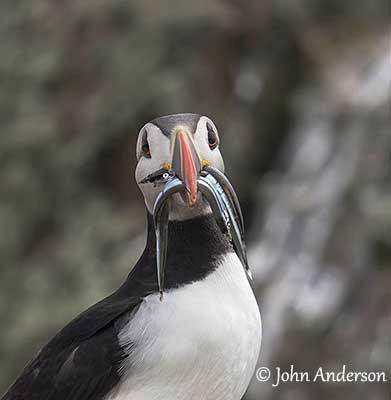
Text by Nicole Bouglouan
Sources:
Iceland review - Feeding Habits of Westman Islandsí Mysterious Nocturnal Birds Tracked
Wikipedia, the free encyclopaedia
History of the Westman Islands
The Westman Islands: lava and puffins
Iceland's Westman Islands are a bird watcher's paradise
All About Birds - On The Puffin Cliffs Of Icelandís Westman Islands
Species list:
Alpine Swift - Tachymarptis melba - Martinet à ventre blanc
American Golden Plover – Pluvialis dominica – Pluvier bronzé
American Robin – Turdus migratorius – Merle d’Amérique
American Wigeon - Mareca americana - Canard à front blanc
Arctic Redpoll or Hoary Redpoll - Acanthis hornemanni - Sizerin blanchâtre
Arctic Tern - Sterna paradisaea – Sterne arctique
Atlantic Puffin – Fratercula arctica – Macareux moine
Barn Swallow - Hirundo rustica - Hirondelle rustique
Barnacle Goose - Branta leucopsis - Bernache nonnette
Barred Warbler - Curruca nisoria - Fauvette épervière
Black and white Warbler – Mniotilta varia – Paruline noir et blanc
Blackcap – Sylvia atricapilla – Fauvette à tête noire
Black Guillemot - Cepphus grylle - Guillemot à miroir
Black-headed Gull – Chroicocephalus ridibundus – Mouette rieuse
Black-legged Kittiwake - Rissa tridactyla - Mouette tridactyle
Blackpoll Warbler - Setophaga striata – Paruline rayée
Black Redstart – Phoenicurus ochruros – Rouge-queue noir
Black-tailed Godwit - Limosa limosa - Barge à queue noire
Black-throated Blue Warbler - Setophaga caerulescens - Paruline bleue
Bluethroat - Luscinia svecica - Gorgebleue à miroir
Blue-winged Teal - Anas discors - Sarcelle à ailes bleues
Blyth’s Reed Warbler - Acrocephalus dumetorum - Rousserolle des Buissons
Bohemian Waxwing - Bombycilla garrulous - Jaseur boréal
Brambling - Fringilla montifringilla - Pinson du Nord
Brant Goose - Branta bernicla - Bernache cravant
Buff-bellied Pipit - Anthus rubescens - Pipit farlousane
Buff-breasted Sandpiper - Tryngites subruficollis - Bécasseau roussâtre
Canada Goose - Branta canadensis - Bernache du Canada
Cedar Waxwing – Bombycilla cedrorum – Jaseur d’Amérique
Citrine Wagtail - Motacilla citreola – Bergeronnette citrine
Common Blackbird - Turdus merula - Merle noir
Common Chaffinch – Fringilla coelebs – Pinson des arbres
Common Chiffchaff - Phylloscopus collybita - Pouillot véloce
Common Coot - Fulica atra - Foulque macroule
Common Eider - Somateria mollissima - Eider à duvet
Common Goldeneye - Bucephala clangula – Garrot à œil d’or
Common House Martin - Delichon urbicum - Hirondelle de fenêtre
Common Kestrel – Falco tinnunculus – Faucon crècerelle
Common Loon or Great Norther Diver - Gavia immer - Plongeon imbrin
Common Murre - Uria aalge - Guillemot de Troïl
Common Raven – Corvus corax - Grand corbeau
Common Redpoll - Acanthis flammea - Sizerin flammé
Common Redshank - Tringa totanus - Chevalier gambette
Common Redstart - Phoenicurus phoenicurus - Rougequeue à front blanc
Common Ringed Plover - Charadrius hiaticula - Pluvier grand-gravelot
Common Rosefinch - Carpodacus erythrynus - Roselin cramoisi
Common Scoter - Melanitta nigra - Macreuse noire
Common Shelduck - Tadorna tadorna - Tadorne de Belon
Common Snipe – Gallinago gallinago - Bécassine des marais
Common Starling - Sturnus vulgaris - Etourneau sansonnet
Common Swift - Apus apus - Martinet noir
Common Whitethroat - Sylvia communis - Fauvette grisette
Common Wood Pigeon - Columba palumbus - Pigeon ramier
Common Yellowthroat - Geothlypis trichas - Paruline masquée
Dunlin - Calidris alpina - Bécasseau variable
Dunnock – Prunella modularis – Accenteur mouchet
Eurasian Curlew - Numenius arquata - Courlis cendré
Eurasian Dotterel - Charadrius morinellus - Pluvier guignard
Eurasian Oystercatcher – Haematopus ostralegus – Huitrier pie
Eurasian Rock Pipit - Anthus petrosus - Pipit maritime
Eurasian Siskin – Spinus spinus – Tarin des aulnes
Eurasian Wigeon - Mareca penelope - Canard siffleur
Eurasian Woodcock - Scolopax rusticola - Bécasse des bois
Eurasian Wren – Troglodytes troglodytes – Troglodyte mignon
European or Eurasian Golden Plover - Pluvialis apricaria - Pluvier doré
European Goldfinch - Carduelis carduelis - Chardonneret élégant
European Pied Flycatcher - Ficedula hypoleuca - Gobemouche noir
European Robin - Erhitacus rubecula - Rouge-gorge familier
European Shag – Phalacrocorax aristotelis – Cormoran huppé
European Stonechat - Saxicola rubicola - Tarier pâtre
European Storm-petrel – Hydrobates pelagicus – Océanite tempête
Fieldfare - Turdus pilaris - Grive litorne
Franklin’s Gull - Leucophaeus pipixcan - Mouette de Franklin
Gadwall - Mareca strepera - Canard chipeau
Garden Warbler - Sylvia borin - Fauvette des jardins
Garganey - Anas querquedula - Sarcelle d’été
Glaucous Gull - Larus hyperboreus - Goéland bourgmestre
Goldcrest – Regulus regulus - Roitelet huppé
Great Black-backed Gull – Larus marinus – Goéland marin
Great Cormorant – Phalacrocorax carbo – Grand cormorant
Greater Scaup - Aythya marila - Fuligule milouinan
Greater Short-toed Lark - Calandrella brachydactyla - Alouette calandrelle
Greater White-fronted Goose - Anser albifrons - Oie rieuse
Greater Yellowlegs - Tringa melanoleuca - Chevalier criard
Great Shearwater - Puffinus gravis - Puffin majeur
Great Skua - Stercorarius skua - Grand labbe
Green-winged Teal - Anas carolinensis - Sarcelle à ailes vertes
Grey Heron – Ardea cinerea – Grey Heron
Greylag Goose - Anser anser - Oie cendrée
Grey Wagtail - Motacilla cinerea - Bergeronnette des ruisseaux
Gyrfalcon - Falco rusticolus - Faucon gerfaut
Harlequin Duck - Histrionicus histrionicus - Arlequin plongeur
Hawfinch – Coccothraustes coccothraustes – Grosbec casse-noyaux
Hen Harrier – Circus cyaneus cyaneus – Busard St Martin
Hermit Thrush - Catharus guttatus - Grive solitaire
Herring Gull – Larus argentatus – Goéland argenté
Horned Grebe - Podiceps auritus - Grèbe esclavon
Iceland Gull - Larus glaucoides - Goéland arctique
Ivory Gull - Pagophila eburnea - Mouette blanche
King Eider - Somateria spectabilis - Eider à tête grise
Laughing Gull - Leucophaeus atricilla - Mouette atricille
Lapland Longspur - Calcarius lapponicus - Bruant lapon ou Plectrophane lapon
Leach’s Storm-Petrel - Oceanodroma leucorhoa - Océanite cul-blanc
Lesser Black-backed Gull – Larus fuscus – Goéland brun
Lesser Whitethroat - Curruca curruca – Fauvette babillarde
Little Auk or Dovekie - Alle alle - Mergule nain
Little Bunting - Emberiza pusilla - Bruant nain
Little Egret – Egretta garzetta – Aigrette garzette
Long-eared Owl – Asio otus - Hibou moyen-duc
Long-tailed Duck - Clangula hyemalis - Harelde boréale
Long-tailed Jaeger - Stercorarius longicaudus - Labbe à longue queue
Mallard – Anas platyrhynchos – Canard colvert
Manx Shearwater - Puffinus puffinus - Puffin des Anglais
Meadow Pipit - Anthus pratensis - Pipit farlouse
Merlin - Falco columbarius - Faucon émerillon
Mew Gull or Common Gull - Larus canus - Goéland cendré
Northern Fulmar – Fulmarus glacialis – Fulmar boreal
Northern Gannet - Morus bassanus - Fou de Bassan
Northern Harrier - Circus cyaneus hudsonius - Busard d’Amérique
Northern Lapwing – Vanellus vanellus - Vanneau huppé
Northern Parula - Setophaga americana - Paruline à collier
Northern Shoveler - Anas clypeata - Canard souchet
Northern Wheatear - Oenanthe oenanthe - Traquet motteux
Parasitic Jaeger or Arctic Skua - Stercorarius parasiticus - Labbe parasite
Pectoral Sandpiper - Calidris melanotos - Bécasseau tacheté
Pink-footed Goose - Anser brachyrhynchus - Oie à bec court
Pomarine Skua or Jaeger - Stercorarius pomarinus - Labbe pomarin
Purple Sandpiper - Calidris maritima - Bécasseau violet
Razorbill - Alca torda - Petit Pingouin (Pingouin torda)
Red-backed Shrike - Lanius collurio - Pie-grièche écorcheur
Red-breasted Merganser - Mergus serrator - Harle huppé
Red-breasted Nuthach – Sitta Canadensis – Sittelle à poitrine rousse
Red-eyed Vireo - Vireo olivaceus - Vireo à oeil rouge
Red Knot - Calidris canutus - Bécasseau maubèche
Red-necked Grebe - Podiceps grisegena - Grèbe jougris
Red-necked Phalarope - Phalaropus lobatus - Phalarope à bec étroit
Red Phalarope - Phalaropus fulicarius - Phalarope à bec large
Red-throated Diver (Loon) - Gavia stellata - Plongeon catmarin
Redwing - Turdus iliacus - Grive mauvis
Ring-billed Gull - Larus delawarensis - Goéland à bec cerclé
Ring Ouzel - Turdus torquatus - Merle à plastron
Rock Dove or Rock Pigeon - Columba livia - Pigeon biset
Rock Ptarmigan - Lagopus muta - Lagopède alpin
Rosy Starling - Sturnus roseus - Etourneau roselin
Ruby-crowned Kinglet – Regulus calendula - Roitelet à couronne rubis
Ruddy Turnstone - Arenaria interpres - Tournepierre à collier
Ruff - Philomachus pugnax - Combattant varié
Sabine’s Gull - Xema sabini - Mouette de Sabine
Sand Martin - Riparia riparia - Hirondelle de rivage
Sanderling – Calidris alba - Bécasseau sanderling
Scarlet Tanager – Piranga olivacea – Tangara écarlate
Semipalmated Plover - Charadrius semipalmatus – Gravelot semipalmé
Semipalmated Sandpiper - Calidris pusilla - Bécasseau semipalmé
Short-eared Owl - Asio flammeus - Hibou des marais
Sky Lark – Alauda arvensis – Alouette des champs
Snow Bunting - Plectrophenax nivalis - Bruant des neiges ou Plectrophane des neiges
Songthrush – Turdus philomelos – Grive musicienne
Sooty Shearwater - Puffinus griseus - Puffin fuligineux
Spotted Flycatcher - Muscicapa striata - Gobemouche gris
Surf Scoter - Melanitta perspicillata - Macreuse à front blanc
Swainson’s Thrush - Catharus ustulatus - Grive à dos olive
Thick-billed Murre - Uria lomvia - Guillemot de Brünnich
Tufted Duck - Aythya fuligula - Fuligule morillon
Upland Sandpiper - Bartramia longicauda - Maubèche ou Bartramie des champs
Velvet Scoter - Melanitta fusca - Macreuse brune
Water Rail - Rallus aquaticus - Râle d’eau
Whimbrel – Numenius phaeopus – Courlis corlieu
Whinchat - Saxicola rubetra - Tarier des prés
White-crowned Sparrow – Zonotrichia leucophrys - Bruant à couronne blanche
White-rumped Sandpiper - Calidris fuscicollis - Bécasseau à croupion blanc
White Wagtail - Motacilla alba - Bergeronnette grise
White-winged Scoter - Melanitta deglandi - Macreuse à ailes blanches
White-winged Tern - Chlidonias leucopterus - Guifette leucoptère
Whooper Swan – Cygnus Cygnus – Cygne chanteur
Willow Warbler - Phylloscopus trochilus - Pouillot fitis
Wilson’s Storm-Petrel - Oceanites oceanicus - Océanite de Wilson
Woodchat Shrike - Lanius senator - Pie-grièche à tête rousse
Wood Duck - Aix sponsa - Canard carolin
Yellow-billed Loon or White-billed Diver - Gavia adamsii - Plongeon à bec blanc
Yellow-browed Warbler - Phylloscopus inornatus - Pouillot à grands sourcils
Yellow-legged Gull - Larus michahellis - Goéland leucophée
Yellow-rumped Warbler – Setophaga coronata – Paruline à croupion jaune

John Anderson
John Anderson Photo Galleries
WESTMAN ISLANDS BIRD SPECIES
(Vestmannaeyjar Islands - ICELAND)
The Westman Islands (Vestmannaeyjar in Icelandic language), is an archipelago off the South East coast of Iceland. The main island is Heimaey with about 4,400 inhabitants.
These islands are surrounded by fifteen uninhabited smaller islands (although six of them are used for hunting). About thirty rocks and reefs attract a very rich seabird population.
The Westman Archipelago is named “The Pearls in the Ocean” and is located in the Southern Icelandic Volcanic Zone.
It has been formed by several eruptions over the past 10,000-12,000 years. There are 70/80 volcanoes, both above and below the sea. The island group is about 38 kilometres long and 29 kilometres broad, with the closest island at about eight kilometres from mainland Iceland.
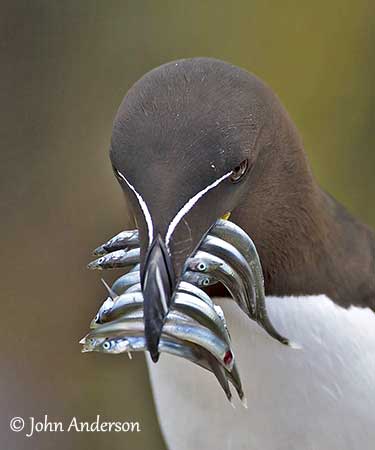
John Anderson
John Anderson Photo Galleries
The Westman Islands receives very little snow but a lot of rain. The migratory birds are usually seen first in spring, and they leave the place in the autumn. Several seabirds can be found here, and among them Alcidae, Sulidae and Laridae.
The flora includes about 150 plant species and numerous insects have been identified. The waters around the archipelago are listed as rich fishing grounds.
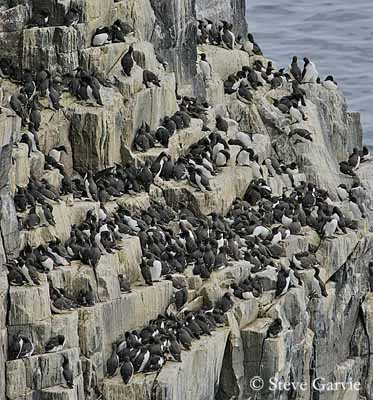
Steve Garvie
RAINBIRDER Photo galleries
Heimaey, the largest island, is home to the most important Atlantic Puffin population. Large numbers of seabirds such as Common Murre, Razorbill, Black-legged Kittiwake, Manx Shearwater, Northern Fulmar and several gull species nest on the island.
However, both weather and sea conditions and the lack of food make very difficult to raise the chicks. The seabirds nest in huge numbers in cliffs and grassy ledges, whereas other species are more irregular.
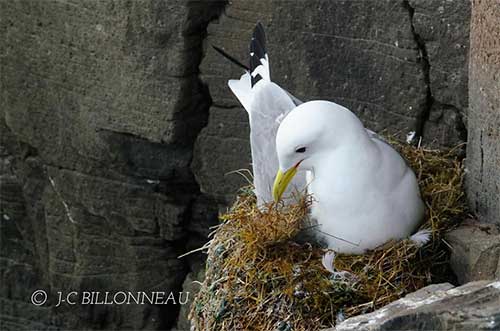
Three bird species of elusive nocturnal birds are staying on Westman Islands during some months of the year, but they winter in the southern hemisphere. These species are the Manx Shearwater, the Leach’s Storm-Petrel and the European Storm-petrel.
They only come ashore at night, and are difficult to see. The petrel’s flight is often compared to that of bats, making them very mysterious. They are long-distance migrants, as the Leach’s Storm-Petrel winters in both Namibia and Brazil, whereas the Manx Shearwater winters in Argentina. The European Storm-petrel spends the winter off South Africa.
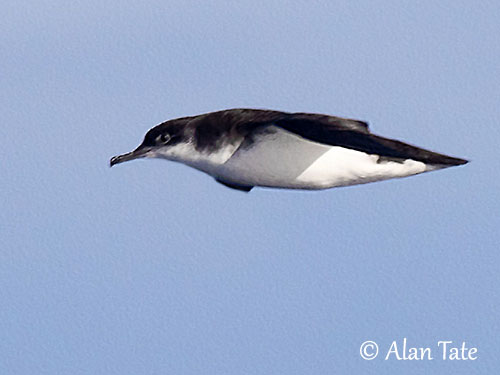
Alan & Ann Tate
AA Bird Photography
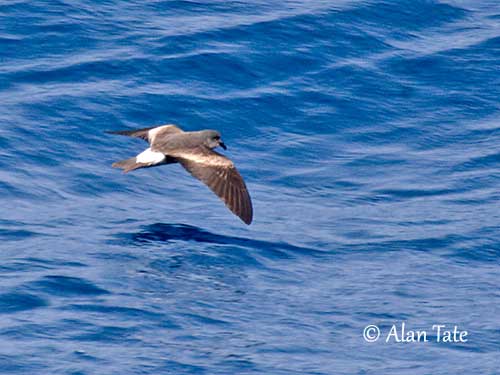
Alan & Ann Tate
AA Bird Photography
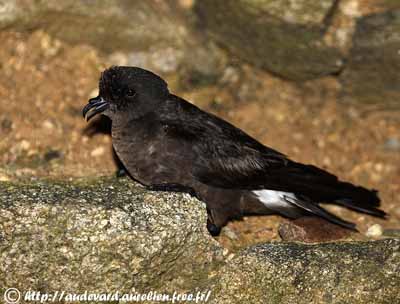
Aurélien Audevard
OUESSANT DIGISCOPING
But the Atlantic Puffin is the most common species of the Westman Islands. With a breeding population estimated at more or less 157,000 pairs, these islands are home to the world’s largest Atlantic Puffin colony complex.
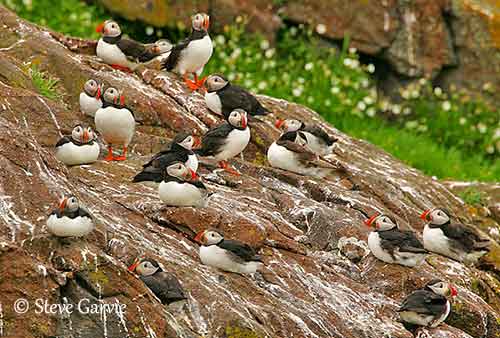
Steve Garvie
RAINBIRDER Photo galleries
There is a constant volcanic activity in this area, started during the last 100-200 thousand years, with relatively frequent eruptions leaving submarine craters and crater rows behind, but also new islands.
Surtsey Island and Heimaey Island eruptions occurred recently, and confirm the intense volcanic activity of this area.
The Westman Islands attract numerous visitors every year. They visit craters and learn about the volcanic activity at the Eldheimar Museum, while others enjoy the incredible nature opportunities, from birds to whales, through amazing landscapes.
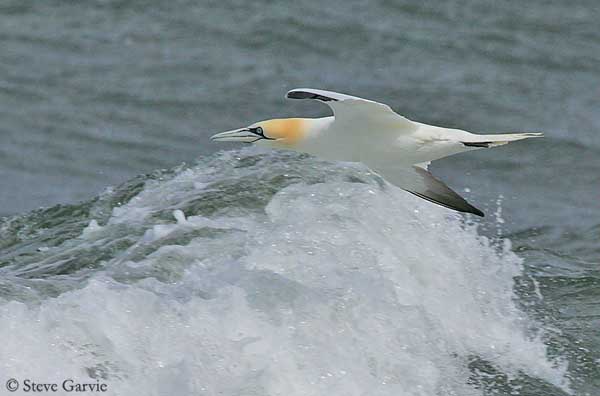
Steve Garvie
RAINBIRDER Photo galleries